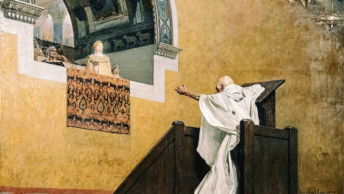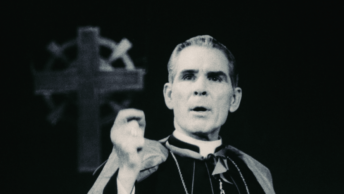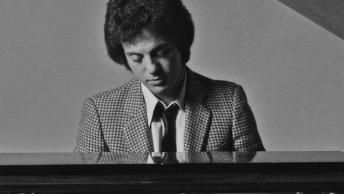In 1971, the average U.S. income was $10,600. The cost of a new house was $25,250; however, if you were just starting out, you could rent and pay your landlord an average monthly sum of $150. And if you had an extra $3,579 to spare, a spanking new Dodge Charger could be purchased and fueled for 40 cents per gallon. “High tech” and memorable toys could also be found. For just $29.88 or $8.99, respectively, you could impress your family and neighbors by bringing home the latest cassette recorder and popular toy—Rock Em Sock Em Robots.
Beyond things economic, plenty of history was transpiring, as well. In January, cigarette advertisements were banned from television while All in the Family made its debut. That February, President Nixon installed his secret taping system in the White House. In March, Joe Frazier beat Muhammad Ali in 15 rounds to retain his heavyweight boxing title. In April, the U.S. Supreme Court upheld the use of busing to achieve racial desegregation. In May, UCLA won yet another NCAA basketball championship. In June, Ed Sullivan wrapped up his final television show on CBS. In July, President Nixon announced he would visit the People’s Republic of China. In August, Boston Bruin great Bobby Orr signed the first million-dollar contract in NHL history. In September, Cardinal Josef Mindszenty of Hungary took refuge in a U.S. Embassy. In October, Walt Disney World officially opened its doors in Florida. And in December, CBS introduced Americans to The Waltons.
But what about November? Well, I’m glad you asked.
As Successor Trustee of my father’s trust, I recently came upon a parish bulletin my dad had retained from November 1971. In it, the pastor shared a letter he had received from a parishioner concerned with clothing (or lack thereof) being worn at Mass.
Dear Father:
You have asked us to express any of our problems to you. I am writing to you with the hope of solving a problem that has been upsetting me greatly. I am a young person with an open mind and I try to be fair in my judgements. I admit I was brought up in the old teachings of the Church and prefer many of the old ways to some of the changes. I also feel there is room for some change.
As time has passed, I have sat in church and noticed the various fashion changes and said nothing. I only thank God that some hemlines are coming down. I realize everyone likes to dress in fashion including me, but I cannot accept women and teenagers attending church in micro-minis and hot pant dresses. I feel this is absolutely the last straw, for it is distracting, disrespectful to, and vulgar. There is a time and place for such clothes and if these women wish to expose their bodies, I wish they would do it elsewhere. The teenagers, as well as grown women and mothers, are not careful when bending, either.
Many of my friends and neighbors agree with me and have felt it to be a very embarrassing problem. I ask you, Father, only to please ask these teens and women to keep one or two dresses at a reasonable length (an inch above the knee) for church wear. If we don’t show our children the good examples, how will they learn? I don’t feel this is asking too much of our parishioners. It is just a shame they can’t use common sense and realize this for themselves. When the Church gave permission for women to remove their hats and expose their hair, I’m sure they didn’t mean for exposure to go this far. I truly hope something can be done about this situation, because I feel this is something I cannot accept.
Thank you for listening to my problem and God give you the patience to deal with the many problems in the world today.
Sincerely yours—(a parishioner)
In retaining this bulletin from nearly a half century ago, I wonder if my father thought the letter to be amusing or if he suspected that something other than fashion was brewing across our great nation. For just two years later, on January 22, 1973, the U.S. Supreme Court would foist upon the American people their now infamous Roe v. Wade decision effectively sanctioning abortion across the fifty states. Two generations later, more than 60 million unborn children have been victimized by the justices’ discovery of a new constitutional “right.”
For those residing in the early 1970s, that court decision must have hit some of them like a ton of bricks. The decision, however, was no surprise to Pope Paul VI, who had already prophesied an overall lowering of morality in his 1968 encyclical, Humanae Vitae.
Today, how many of us can deny that the Holy Father, now St. Paul VI, continues to be correct?
In his January 2013 essay, Reflections of a Catholic Layman on Many of the Forced Marches Throughout Time, a now deceased professor friend, Dr. Donald R. Byrne, noted the courage of those who stand for truth within an increasingly relativistic public square:
“The efforts of women like Dr. Monica Miller on the theology faculty at Madonna University have given us evidence of these atrocities. She has risked incarceration by the law, as evil as such laws are, by searching the dumpsters outside of abortion mills. Her heroic efforts and those of others have given us a pictorial record of these atrocities. She, as have others, have helped retrieve some of these corpses of dead babies and given them more decent Christian burials, but most of the aborted are either incinerated as medical waste or are deposited in landfills at the end of a ride there by a garbage truck.”
He concluded with these words: “My God, what has happened to our society? Do they think that no harmful effects will come from these barbaric practices? Just you wait and see.”
Edmund Burke once remarked: “The only thing necessary for the triumph of evil is for good men to do nothing.” Until things change, however, perhaps we might also say: “Welcome to our future.”








